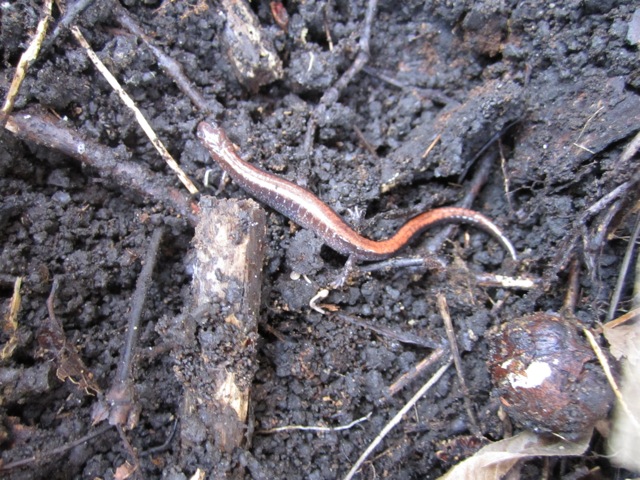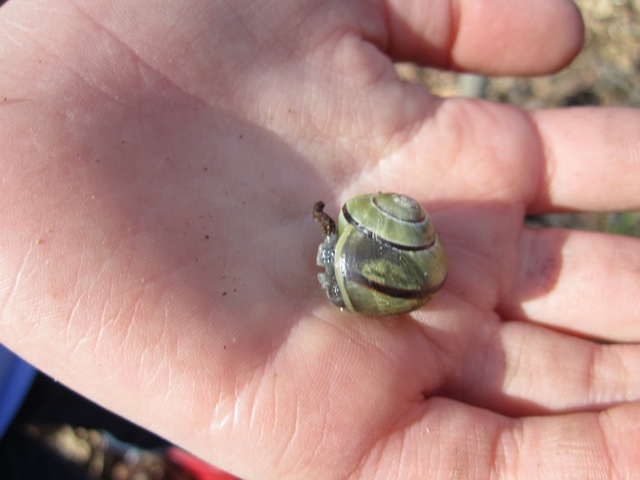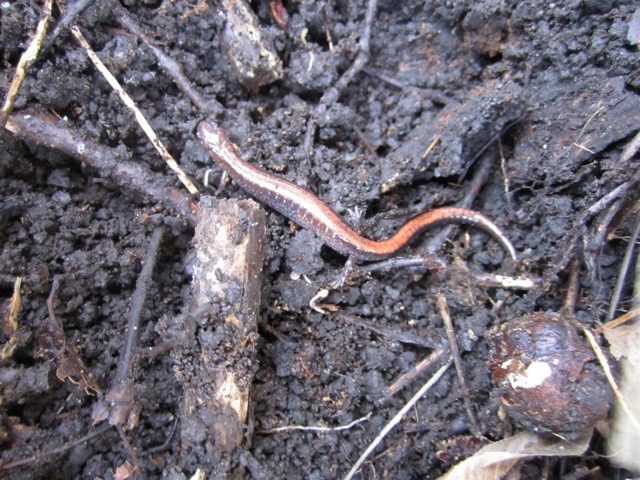 Perfectly at home.Photo: Sarah GoodyearIf I asked you where the picture above was probably taken, I don’t think your first answer would be Manhattan.
Perfectly at home.Photo: Sarah GoodyearIf I asked you where the picture above was probably taken, I don’t think your first answer would be Manhattan.
But that’s exactly where I found this fine-looking red-backed salamander: In a brushy, overgrown part of a park in the Washington Heights neighborhood of New York City.
This is the second time I’ve gone salamander-hunting in this spot. Here’s how you do it: You get off the subway and walk a few blocks, along streets where merengue music is blaring from the storefronts, past the sidewalk food vendors and the cellphone stores and a group handing out flyers for a candidate in the upcoming Dominican presidential election.
Then, just a few minutes later, you are flushing robins from the forest floor as you clamber up a steep hill. Step off the path. Start turning over logs. You’ll find salamanders under every other one (be careful, they are fragile creatures).
 A brown-lipped or English garden snail.Photo: Sarah GoodyearOn this particular day, we also found some strange golden ants; what I think is a banded snail (any snail experts out there?) Cepaea nemoralis, the brown-lipped or English garden snail; and, along the more traveled parts of the trail, way too much broken glass.
A brown-lipped or English garden snail.Photo: Sarah GoodyearOn this particular day, we also found some strange golden ants; what I think is a banded snail (any snail experts out there?) Cepaea nemoralis, the brown-lipped or English garden snail; and, along the more traveled parts of the trail, way too much broken glass.
The red-backed salamander is what is known as a lungless salamander, which means just what it says. It breathes through its skin. So it is particularly sensitive to water contamination. This is an animal that must have moist, clean leaf litter and earth to survive. The abundant water seeping through the granite outcroppings of Upper Manhattan makes this place a perfect habitat.
People tend to get excited about seeing big wild animals in the city. Red-tailed hawks, raccoons, coyotes, wild turkeys — they get all the press. It’s understandable. It’s hard to imagine giving a name to a salamander.
To me, though, it is the salamanders that amaze. Just a couple of inches long, so slight and slim that they can disappear into the leaves with a flash, these tiny amphibians are living their lives without any reference to humanity, smack in the middle of one of the biggest cities in the world.
They are like a secret the park keeps for us, a memory of another time in the life of this island. It is a time we think of as being gone forever. The salamander is proof that it is not.
Updated: Thanks to Matthew Wills of Backyard and Beyond for the snail identification!


